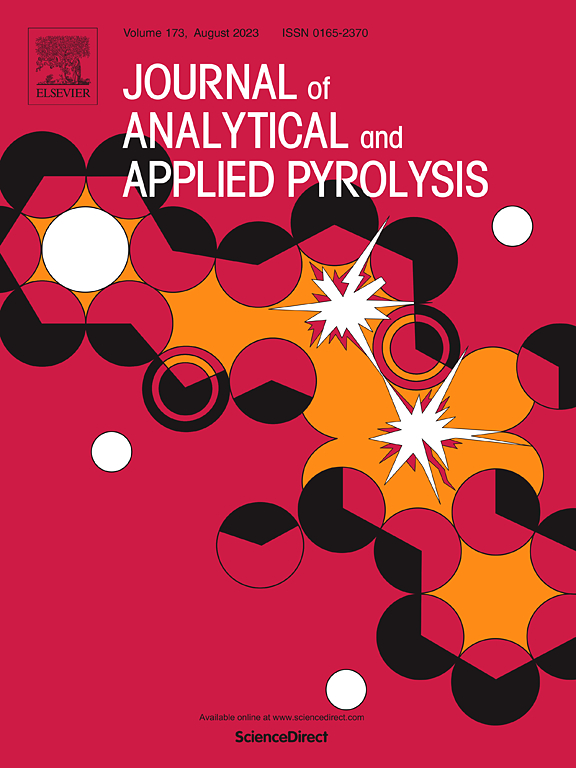通过耦合快速解决热厚模型评估尺寸和形状因素对生物质颗粒脱溶的影响
IF 5.8
2区 化学
Q1 CHEMISTRY, ANALYTICAL
引用次数: 0
摘要
在 CFD 建模中,虽然等温假设一直被用于更新颗粒温度,但在处理热厚颗粒时,其适用性就会降低。本研究开发了一种热厚离散相模型(DPM),用于模拟生物质颗粒组在高加热速率和温度下的热解,并采用拉格朗日方案对颗粒进行跟踪。研究了颗粒大小和形状对挥发物释放和加热历史的影响。对于直径为 9.6 毫米的球形颗粒,表面和中心的温度差 (∆T) 即使在 50 秒内也不会消失。在 200 μm 到 9.6 mm 的粒径范围内,完全释放挥发物所需的时间从 1.5 秒到 40 秒不等。对于圆柱形颗粒,与长径比(AR,颗粒长度与直径之比)为 1 的颗粒相比,长径比为 15 的颗粒的挥发时间可缩短 50% 以上。此外,颗粒的形状和大小也会对反应器内的挥发物分布产生重大影响。这项研究有助于了解颗粒大小和形状对高加热速率下生物质热解过程中传热和传质的影响。本文章由计算机程序翻译,如有差异,请以英文原文为准。
Assessing the effect of size and shape factors on the devolatilization of biomass particles by coupling a rapid-solving thermal-thick model
In CFD modeling, while the isothermal assumption has conventionally been coupled for updating particle temperature, its applicability diminishes when dealing with thermally thick particles. A thermal-thick discrete phase model (DPM) is developed to simulate pyrolysis of biomass particle group at high heating rates and temperatures, with particles tracked in a Lagrangian scheme. The effects of particle size and shape on the volatile release and heating history are investigated. For spherical particles with a diameter of 9.6 mm, the temperature difference between the surface and center (∆T) does not disappear even up to 50 s. In the particle size range spanning from 200 μm to 9.6 mm, the duration required for a complete volatile release extends from 1.5 to 40 s. For cylindrical particles, in contrast to the particles with an aspect ratio (AR, ratio of particle length to diameter) of 1, the devolatilization time of particles with an AR of 15 can be shortened by more than 50 %. In addition, both the particle shape and size can significantly influence the volatile distribution within the reactor. This work contributes to understanding both the particle size and shape impact on heat and mass transfer during biomass pyrolysis at high heating rates.
求助全文
通过发布文献求助,成功后即可免费获取论文全文。
去求助
来源期刊
CiteScore
9.10
自引率
11.70%
发文量
340
审稿时长
44 days
期刊介绍:
The Journal of Analytical and Applied Pyrolysis (JAAP) is devoted to the publication of papers dealing with innovative applications of pyrolysis processes, the characterization of products related to pyrolysis reactions, and investigations of reaction mechanism. To be considered by JAAP, a manuscript should present significant progress in these topics. The novelty must be satisfactorily argued in the cover letter. A manuscript with a cover letter to the editor not addressing the novelty is likely to be rejected without review.

 求助内容:
求助内容: 应助结果提醒方式:
应助结果提醒方式:


